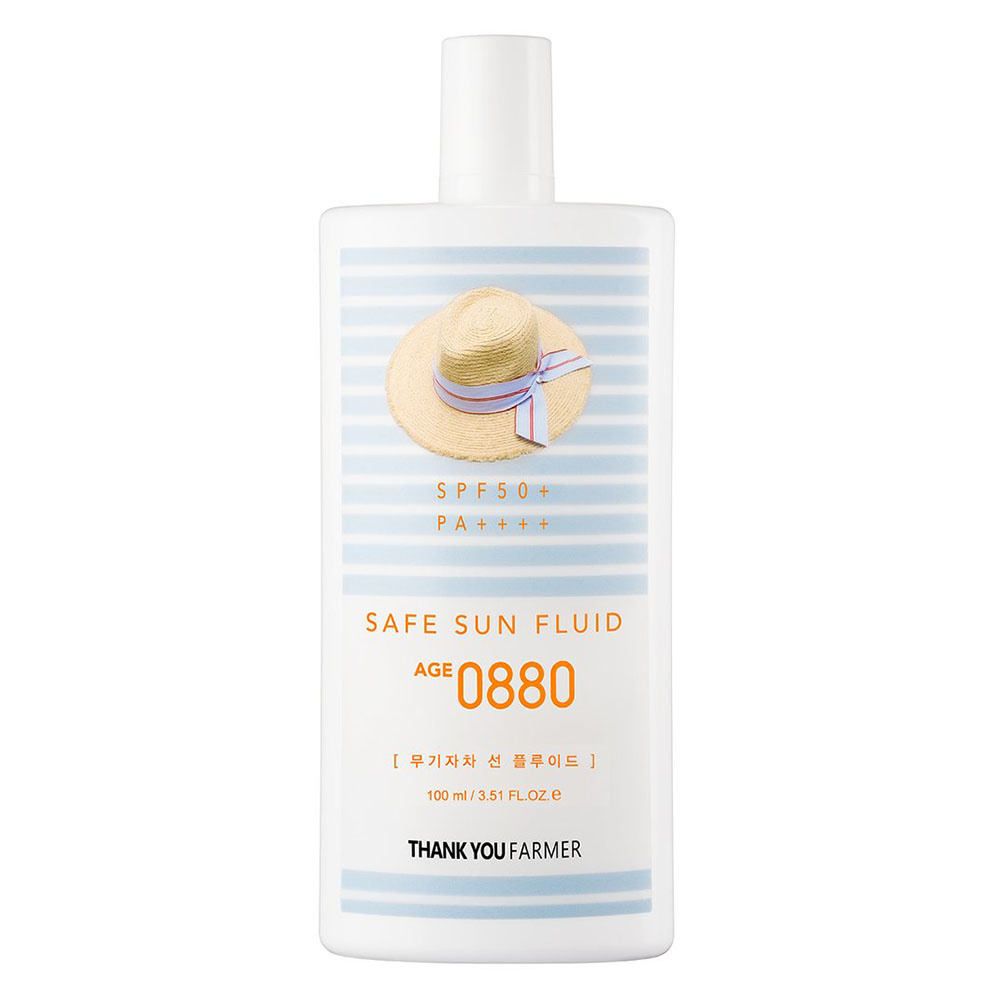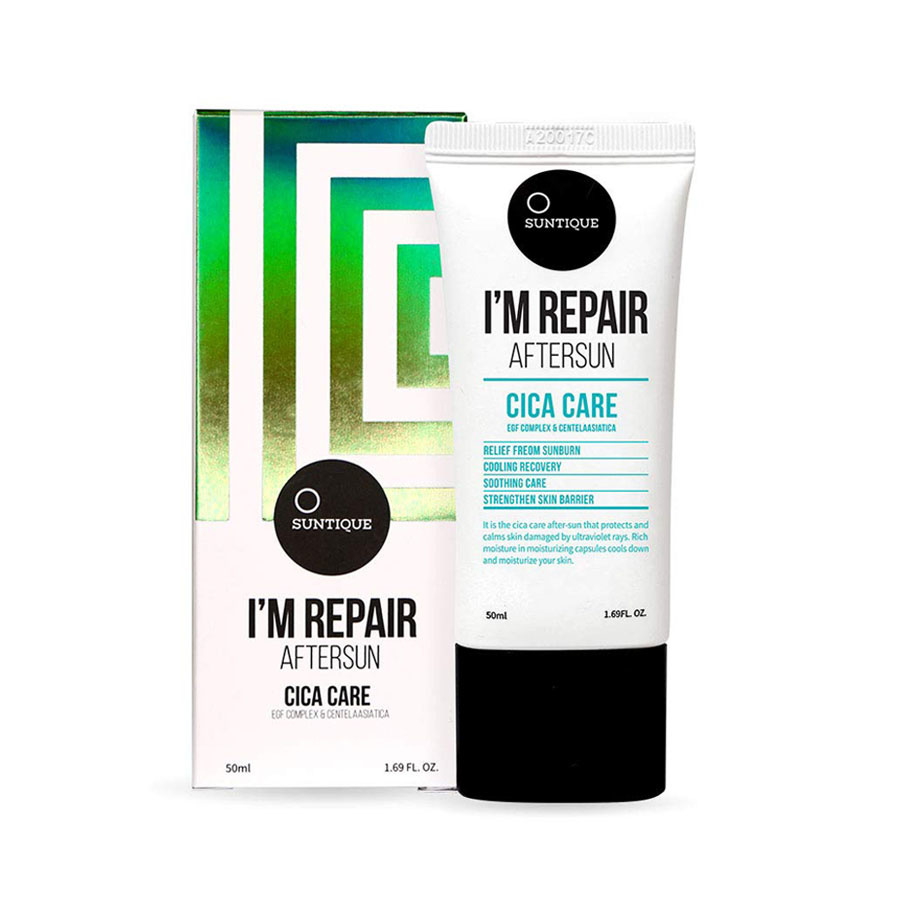If you have been around for some time and you know your way in skincare, you are probably aware off the importance of sunscreen. In an earlier blogpost we explained that, even in the wintertime, you can severely harm and damage your skin when it is is exposed to (visible but also not visible) sunrays. Today i want to give you the ultimate tools to care for your skin when it comes to suncare. What kind of uv-filters are often used and what type of sunscreen is the best for you. It is going to be a long post, so get comfy, get yourself something delicious to drink (apply some sunscreen!) and let's get started!
We separate two different kinds of uv-filters: chemical filters and mineral filters. Chemical filters are absorbed by the skin and will transfer the heat out of the skin, where mineral filters literally create a film on top of the skin and will block the rays like some sort of mirror. Chemical sunscreens are often easy to (re)apply and won't leave a whitecast. Mineral sunscreens however are known for their whitecast. They are mostly a bit greasy at first (so a bit harder to apply evenly) and can become a bit drying during the day. Mineral sunscreens are a great choice for direct sunexposure, children and people who cannot tolerate chemical filters that much.
It is often believed that chemical filters only protect against UVA rays where mineral filters mostly protect against UVB rays. To clear this up, I will list down which filter protects against wich rays.
Before we continue, i will tell a little about sunrays in general. One of the most important factors of aging and the development of hyperpigmentation and melasma is (excessive) exposure of the sun. We seperate three kinds of uv rays: UVA (400-320), UVB (320-280 nm) and UVC (280-100 nm). UVC is blocked by the ozon layer, so we aren't exposed to rays under 280 nm. I will explain the difference between UVA- and UVB rays and wich filters are often used for protection.
UVA rays
However, UVA (aging) is present everyday throughout the year, even in the wintertime and these rays can penetrate through glass and windows as well. This is the reason why it is so important to use a sunscreen on a daily base. UVA can be divided into UVA1 and UVA2. The difference between these two is the wavelenght. UVA1 has a reach off 340-400 naometer and UVA2 has a reach of 320 en 340 nanometer.
Filters that protect against UVA:
Chemical filters:
- Avobenzone (inci list: Butyl Methoxydibenzoylmethane)
- Uvinal A Plus (inci list: Diethylamino Hydroxybenzoyl Hexyl Benzoate)
- Neo Heliopan AP (also known as Bidisulizole Disodium,inci list: Disodium Phenyl Dibenzimidazole Tetrasulfonate).
This filter will provide protection against UVA-2 rays. The filter itself is made of bigger molecules and will therefore not penetrate the skin. It won't provide a lot of protection so it is mostly used in combination with other filters for a broad spectrum coverage. The filter is water soluble so it isn't often seen in water resistant sunscreen.
Mineral filters:
Mineral filters will not only protect the skin against UVA but also against UVB. That is why I will discuss them a bit later on.
UVB rays
UVB (burning) are the rays that is often associated with tanning and can cause severe burns when lacking sun protection. The UVB protection is indicated in a system called 'SPF' ('Sun Protection Factor'). Would you like to read more about the SPF (and PA) rating? Marte explained this a bit more in this earlier blogpost.
Filters that protect against UVB:
I will, again, only address the chemical filters since these specifically offer protection for UVB rays alone.
- Uvinul T 150 (also known as Octyl Triazone, inci list: Ethylhexyl Triazone)
- Octinocate (inci list: Ethylhexyl Methoxycinnamate)
- Octrocrylene
- Octisalate (Also known as Octyl Salicylate, inci list weergegeven: Ethylhexyl Salicylate)
- Homosalate (inci list: Homomenthyl Salicylate)
- Ensulizone (inci list: Phenylbenzimidazole Sulfonic Acid)
- Amiloxate (inci list: Isoamyl p-Methoxycinnamate)
- Polysilicone-15
- Iscotrizinol (UVAsorb HEB, inci list: Diethylhexyl Butamido Triazone)
A very efficient and photo-stable UVB-filter (research has been shown that it will only lose around 10% of its efficiency in 25 hours). This filter is often seen in waterproof formulation since it is only soluble in oil.
- Enzacamene (inci list: 4-Methylbenzylidene Camphor)
Wich filters do we consider 'broad spectrum'?
Chemical filters:
- Tinosorb S (also known as Bemotrizinol, inci list: Bis-Ethylhexyloxyphenol Methoxyphenyl Triazine)
- Tinosorb A2B (nano) (inci list: Tris-Biphenyl Triazine (nano))
- Tinosorb M (also known as Bisoctrizole. Inci list: Methylene Bis-Benzotriazolyl Tetramethylbutylphenol)
- Oxybenzone (inci list: Benzophenone-3)
- Zinc Oxide
- Titanium Dioxide


The Missha All Around Safe Block Aqua Sun Gel SPF50+/PA+++ is a refreshing, broad spectrum sunscreen with a semi-matte finish. The formula is free of fungal acne triggers such as oils, fatty acids, coconut oil and fermented ingredients and makes it therefore a safe option.

You suffer from rosacea:
When you suffer from rosacea, there are a few ingredients you want to avoid. Drying alcohol, lactic and glycolic acid (AHA, chemical exfoliants), Urea, menthol, camphor and SLS can all be a trigger to flare up rosacea. Sundamage and sun exposure in general can worsen this condition, so it is very important to protect your skin well on a daily base.
The Madagascar Centella Hyalu-Cica Water-Fit Sun Serum SPF50+ PA++++ may be an option. The unique Hyalu-Cica formula soothes the skin and stimulates wound healing. The serum glides easily over the skin, has a light texture and leaves a dewy finish.
Can you layer different sunscreens?
I noticed how I have the urge to 'combine' sunscreens. One makes my skin rather oily after a few applies and the other dries my skin out. But is is actually okay to use different sorts of sunscreens throughout the day? Well yes, it is! As long as the other sunscreen has been set, this takes about 5-10 minutes, depending on the sunscreen, you can layer another on top. With this said, it isn't advised to mix them together, since the filters can clash and cause some irritation. Also when different types of filters are mixed, they can decrease in protection efficiency.
Sunscreen as moisturizer?
I mentioned before that you need to apply quite some product to meet the SPF rating the sunscreen claims to have. Most people don't use that amount of moisturizer. Therefore it is advised to use a separate sunscreen since they are also formulated (most of the times they aren't that occlusive as moisturizers) so they are easier to apply in bigger quantities.
If you are struggling to make this all work; a moisturizer and a sunscreen that work well together, you can also try sunscreen with moisturizing abilities. Most Korean sunscreens have a lot of nourishing ingredients and can therefore also function as a moisturizer. A good example is the Troiareuke ACSEN UV Protector Essence. This is a calming moisturizing sunscreen with a light essence-resembling texture. Apart from providing an effective protection from harmful UV rays with SPF50+/PA+++, the product also acts as a shield from stressors such as pollen, dust and air-pollutants. Formulated with Centella Asiatica extract regenerates skin, while soothing and strengthening skin’s protective barrier.

UV filters in make-up
Nowadays a lot of make-up products (BB- en CCcreams, foundations and cushions) contains some level of sun protection. Just as with moisturizers, a lot of people won't use that much make-up that they would actually meet the SPF rating stated on the packaging. To get that maximum protection, it is advised to also use a sunscreen before you apply your make-up and let this set for a few minutes before you continue. If you are struggling to re-apply sunscreen when wearing make-up, you can check out these tips.
There is more then sunscreen alone
So, using a sunscreen is very important but sometimes, especially when you are an outdoorsy persoon like me, it isn't enough to rely on. Luckily there is more you can do to keep your skin safe. Try to avoid the sun at its peak and try to stay in the shadow, wear a hat or cap and sunglasses when you are going outside. If you are really serious, there are even special laundry detergents available that will add in some protection to your clothes, but you can also take a look at clothes with UVP rating.
Furthermore, you can invest in a good aftersun to take care of your skin after a long day outside. The Suntique I'M REPAIR After Sun will cool and calm the skin. The formula contains Aloe Vera for an instant, cooling sensation, Centella Asiatica for calming properties and several ceramides and peptides that will keep and maintain the skins health. A very welcome addition, especially during the summertime.
 To wrap it all up; try to find out what works for you. We all have different skin and different needs and the best protection there is, is the one we actually use or wear.
To wrap it all up; try to find out what works for you. We all have different skin and different needs and the best protection there is, is the one we actually use or wear.
Are you still looking for a sunscreen? You can find our offer here.
What is your best sun protection tip?







 Trending
Trending
 LW Blog
LW Blog










